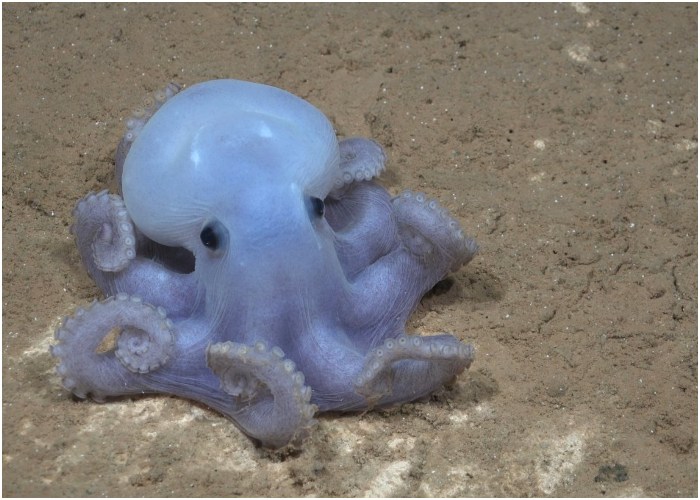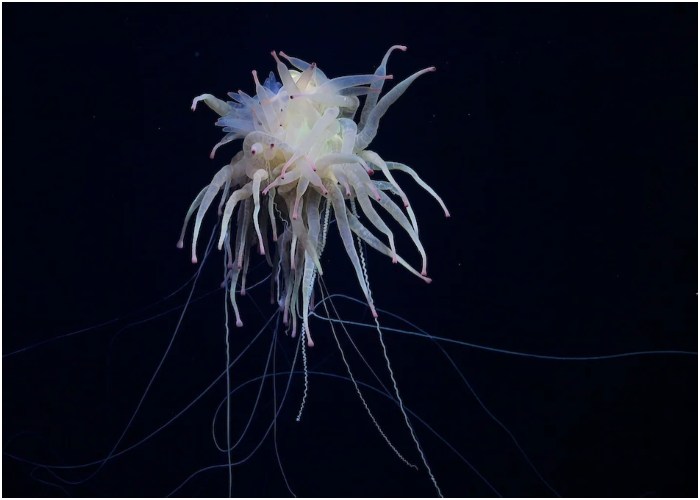In the remote waters of the southeastern Pacific Ocean, some 1,400 kilometers off the coast of Chile, a team of researchers has made groundbreaking discoveries that shed light on the largely unexplored ecosystems of the deep sea. During a monthlong survey, scientists uncovered a previously unknown seamount rising 3,100 meters from the ocean floor, teeming with a diverse array of sea life, many of which may be new to science. These findings underscore the vast, untapped mysteries of the ocean’s depths and highlight the importance of exploring these remote regions. This article delves into the significance of the discoveries, the unique creatures encountered, and the implications for our understanding of deep-sea ecosystems.
Discovering New Depths: The Unseen Seamount
The discovery of the new seamount in the southeastern Pacific Ocean was a surprise even to the experienced researchers of the Schmidt Ocean Institute. Initially detected as a low-resolution bump on satellite images, the seamount was revealed to be a massive undersea mountain with a summit 994 meters below the ocean’s surface. Using a remotely operated vehicle (ROV), the research team explored this seamount, along with nine others, uncovering an ecosystem rich in biodiversity. The seamounts harbored a unique garden of sponges and corals, including ancient coral formations that spanned an area twice the size of a basketball court. Despite being less dense than shallow water reefs, these deep-sea ecosystems are vital to the marine environment, providing habitat and sustenance for a variety of species.

Encounters with Rare and New Species
Among the most remarkable discoveries were encounters with rare and possibly new species. The ROV captured footage of the elusive “Casper” octopus, a ghostly white cephalopod first discovered in 2016 but never before recorded in the Southern Pacific. This octopus, named for its resemblance to the cartoon character Casper the Friendly Ghost, is yet to be formally described by scientists. The expedition also yielded the first-ever footage of a live Promachoteuthis squid, a species previously known only from dead specimens found in fishing nets. These encounters highlight the rich biodiversity of the seamounts and suggest that these remote underwater mountains may be home to many more undiscovered species. In total, the expedition identified 20 animal species that may be new to science, adding to the 150 potential new species from previous expeditions.
Implications for Marine Science and Conservation
The discoveries made during this expedition have significant implications for marine science and conservation. The identification of new species and ecosystems in such a poorly explored region emphasizes the need for continued exploration and study of the deep sea. These ecosystems, while remote, play a crucial role in the health of the global ocean and may hold keys to understanding broader environmental changes. Additionally, the discovery of what may be a fossil of a new species of ancient whale suggests that the seamounts may also be valuable for paleontological research, offering insights into the history of marine life. As human activities increasingly encroach on these fragile environments, understanding and protecting them becomes more urgent. The findings from this expedition provide a compelling case for the conservation of deep-sea habitats and the rich biodiversity they support.

Conclusion
The recent discoveries in the southeastern Pacific Ocean reveal the vast and largely untapped potential of deep-sea exploration. From the uncovering of a massive undersea mountain to the identification of potentially new species, these findings underscore the importance of exploring and understanding our planet’s most remote ecosystems. As we continue to probe the depths of the ocean, we are likely to uncover even more surprises, each contributing to our knowledge of the marine environment and its role in the global ecosystem. The ongoing research in these deep-sea regions is not just about discovering new species; it’s about recognizing the interconnectedness of all life on Earth and the need to preserve it for future generations.